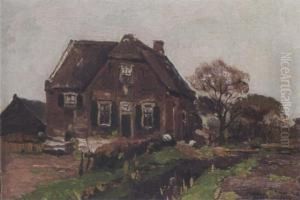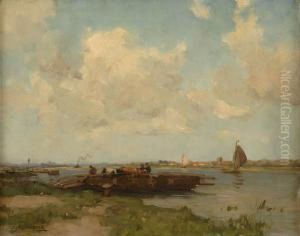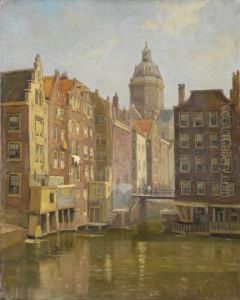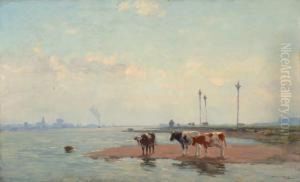Bernard Antoine Van Beek Paintings
Bernard Antoine Van Beek, also known as Bernard van Beek, was a Dutch painter born on December 19, 1875, in Amsterdam, Netherlands. He is best remembered for his landscapes that capture the serene beauty of the Dutch countryside, particularly the areas around the river Vecht and the village of Kortenhoef, where he spent much of his life. Van Beek's works are characterized by their peaceful, idyllic scenes and a subtle, yet effective use of light and color.
Van Beek initially studied at the National Academy of Fine Arts in Amsterdam, where he was influenced by the Hague School of painters—an art movement that started in the Netherlands during the late 19th century, which was known for its realistic depictions of Dutch landscapes and daily life. His style, however, evolved to incorporate elements of Impressionism, focusing on the effects of light and the expression of the moment, which was becoming popular at the end of the 19th century.
During his career, Bernard van Beek became an active member of the 'Arti et Amicitiae' (Art and Friendship), an artist's society in Amsterdam, and 'St. Lucas', another prominent artist's association. His participation in these societies connected him with other artists and provided him venues to exhibit his work. Van Beek's paintings often featured the waterways, polders, and rural houses of Northern Holland, capturing the unique Dutch light and atmosphere through his impressionistic brushwork.
Despite his talent, Bernard van Beek did not achieve widespread international recognition during his lifetime. However, his paintings have been collected and appreciated by art connoisseurs, particularly those with an interest in traditional Dutch landscape art. Van Beek continued to paint and contribute to the Dutch art scene until his death on February 13, 1941, in Kortenhoef, Netherlands. Today, his works can be found in various Dutch museums and private collections, serving as a testament to his dedication to portraying the tranquil beauty of the Dutch landscape.



